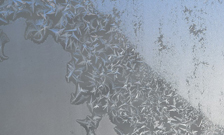Cryonics and the brain: Professor Clive Coen outlines the risks
 In an article published in the winter 2016 edition of the New Humanist, Clive Coen, a Professor of Neuroscience in the Division of Women’s Health and Chair of the charity that publishes that magazine, criticises the promises offered by the cryonics industry. He explains why the prospect of storing humans in liquid nitrogen and subsequently reviving them is wishful thinking.
In an article published in the winter 2016 edition of the New Humanist, Clive Coen, a Professor of Neuroscience in the Division of Women’s Health and Chair of the charity that publishes that magazine, criticises the promises offered by the cryonics industry. He explains why the prospect of storing humans in liquid nitrogen and subsequently reviving them is wishful thinking.
Cryonics is the name given to the sub-zero temperature preservation of humans who are beyond the help of contemporary medicine, but hope to be revived in the far future when a cure for their condition exists. This process was recently highlighted in the media through news of a 14-year-old girl who died of cancer after winning the right in a UK court to have her body cryogenically frozen shortly after death. She expressed the hope to be revived when a cure for her cancer exists. This news has sparked a debate about whether cryonics does in fact offer another chance of life after death. Are people being given false hopes when they are at their most vulnerable?
In his article for the New Humanist, entitled ‘To store, perchance to thaw?’, Professor Coen points out that the cryonics companies emphasise the enduring protection offered by storage in liquid nitrogen, but gloss over all the damage that the tissues will have suffered before they reach safe storage.
‘Frozen water expands and forms ice crystals. Such effects can rupture membranes that are tethered within a watery environment.’
Even if a body is treated with protective solutions including anti-freeze, complete saturation of all the tissues would take a very long time. There are two undesirable consequences: some parts of the body will either (1) be ruptured by ice crystals before benefiting from the protective effects of the anti-freeze or (2) suffer necrosis before benefiting from the protective effects of the liquid nitrogen. In addition, pumping those solutions into a dead body will rupture all the clogged or collapsed blood vessels.
For Professor Coen, a neuroscientist, the risks to the brain in particular make the prospect of successful cryogenic freezing and revival implausible:
‘Where’s the evidence that the protective agents will have saturated all the white matter and all the cell-dense regions (grey matter) before they’ve been frozen? Even a minuscule risk would translate into a lot of damage if trillions of components are in play.’
Along with setting out the risks to the brain’s structure, Professor Coen highlights the deleterious effects of dehydration on its neurochemical components, as well as the rapid and irreversible damage that the lack of oxygen following death has on neurons and supporting cells.
Reviving the brain also poses significant problems:
‘… it’s going to be necessary to access and resuscitate all the components simultaneously. Even the first steps towards that objective seem unimaginable. But partial reanimation accompanied by partial necrosis wouldn’t bode well and very few sites in the adult brain are capable of cellular regeneration.’
There is no evidence at present for the successful sub-zero storage, thawing and revival of any mammal. Nevertheless, cryogenics is being offered as an option for people who want to be cured of their fatal disease, even after it has killed them. This raises ethical questions about the expensive packages being marketed to vulnerable people. In an article for the Guardian, Professor Coen argues that it would be a ‘sensible step’ for the UK government to consider banning the marketing of cryogenics, following the example of the Canadian state of British Columbia.
‘At the moment that seems a very sensible strategy’ adding: ‘There is no evidence outside amphibia and tissue slices that any of this works. We’re not at a point where regulation is appropriate. [The prospect of reviving the] whole body is just ridiculous and the whole brain is only slightly less ridiculous.’
In Professor Coen’s opinion, research should focus on the development of procedures that would enable long-term storage of organs for transplantation. Achieving such success with single organs will be immensely challenging. As Professor Coen points out, ‘there’s something profoundly wrong about an industry that’s marketing the prospect of resurrecting a whole body from ice, when transplant surgeons wouldn’t dream of using a heart or liver that’s been in liquid nitrogen’.
You can read Professor Clive Coen’s article To store, perchance to thaw? on the New Humanist website.
Professor Coen is also quoted by the Guardian in their articles Top UK scientist calls for restrictions on marketing cryonics and Will deep frozen bodies be fit for new life?
Find out more about Professor Coen's research.